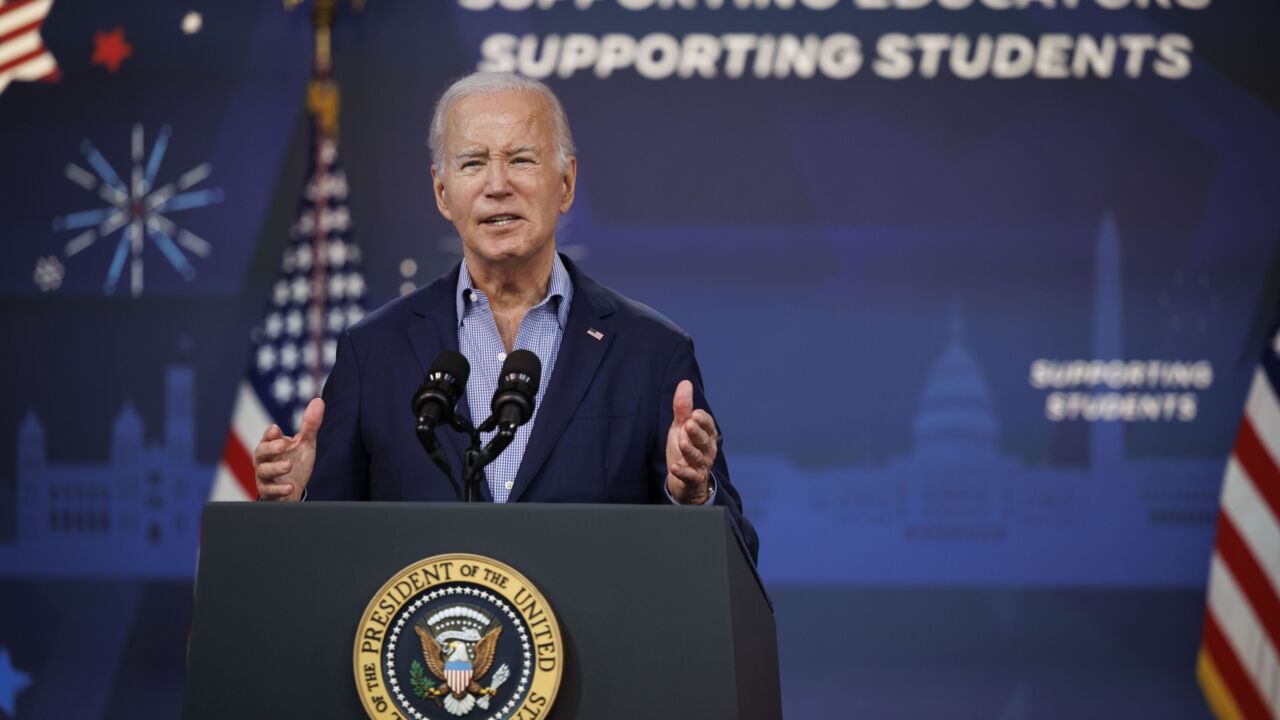-
Broken down by product type, the agency's NJCLASS Standard Fixed product should account for a large majority of the loans, 75.4%. NJCLASS Consolidation will account for the next-largest group, 14.1%.
April 24 -
Most of the notes will be fixed rate, but the A1B tranche could be benchmarked to the three-month Secured Overnight Financing Rate (SOFR).
April 11 -
There are four risk events that could stop cash flow into SMB 2024-R1's deal—missing overcollateralization targets, a stymied principal distribution and the deals do not exercise an optional clean-up call.
April 10 -
Biden's "Plan B" would see loans reduced or wiped out for millions of Americans — including those whose debt exceeds their original principal amount.
April 8 -
One tranche in the deal, supported by a pool of private student loans, matures every year beginning on June 1, 2029.
April 2 -
The amount of deferred loans allowed in the pool is capped at 70%, with at least 96% of them being cosigned. Also, no more than 6% of loans with a FICO score of less than 700 can be cosigned.
March 20 -
Spreads are expected to come in at 120 basis points over the 3M, I-Curve on the A1A notes and then range from 185 bps—425 bps over the 3M, I-Curve on the class B through class D notes.
March 14 -
Banks that had financed warehouse facilities and investment firms that previously bought pools of loans from originators and servicers are among student debt holders looking for an exit strategy.
March 7 -
Higher education debt originations are poised to turn a corner next year amid industry changes. The big question for observers is whether securitization will follow in 2024 business.
November 28 -
The deal has 76,440 in underlying loans, compared with 46,671 on the 2023-C deal. The average balance per borrower, however, was just $14,657, compared with the $14,430 on the 2023-C deal.
November 1 -
Esoteric transactions' premiums and longer durations are especially attractive, as other consumer assets are put to the test.
October 25 -
The outstanding notes have 18.6%-19.6% of credit support in place, based on stressed break-even cash flow scenarios.
October 19 -
The deal has a sequential repayment structure and collateral with 168 months of seasoning. The loans are already past their peak default periods, which each typically occur three to five years after a borrower enters repayment.
October 4 -
Should the transaction's cumulative default rate exceed 2.45% on or before Oct. 25, 2027, a lockout trigger accelerates note principal repayments from closing until May 25, 2024.
October 3 -
The deal will issue two series of notes, which benefit from a reserve account with approximately $1.4 million, representing about 2.0% of the initial bond balance.
September 25 -
High-quality attributes secure the notes, including that 90.7% of the loans are been co-signed, and just 12.1% of the trust's loans consist of direct-to-consumer (DTC) loans.
August 16 -
The deal also has a reserve account with an initial balance of $8.0 million at closing, representing 2.0% of the initial bond balance.
August 1 -
Both credit card and student loan issuers made up for tepid starts to 2023 by leaping over their first-quarter production numbers, but it wasn't enough to overcome an overall slide.
July 10 -
Loans that have yet to be originated must adhere to limitations. No more than $719,870 of originations can consist of loans made to students attending proprietary schools.
May 9 -
At around June 15, 2024, the VSAC will reach the end of a collateral recycling period, when it has the option to originate additional eligible loans.
April 28



















